Cleveland’s Window
By JJ Jackson on October 30, 2014Cleveland. What image comes to mind when the word is uttered? Is it smoke and fire billowing from the Cuyahoga River? Is it block after block and neighborhood after neighborhood of dilapidated and boarded up houses? Do abandoned steel mills come to mind? Given the portrait painted by journalists and media in general, it is nearly impossible not to envision the city with some negative connotation. Cleveland is the Mistake on the Lake. The butt of all jokes. At best, it is the lovable loser.
Cleveland itself clings to the lovable loser identity. That identity is epitomized by its sport franchises. No one under the age of 50 has been alive for a single championship. No one under the age of 60 can recall a Lombardi Trophy being hoisted, a World Series pennant being unveiled, or an NBA banner being revealed. There have been no ticker tape parades in Cleveland since 1964. Think about that for a moment. 1964. Not a single championship has been celebrated in the streets of Cleveland since 1964. In fact, all the city has is painful memories to recall from its sports history. Memories so painful in fact, around town, they are simply referred to as names and monikers that sum up the agony.
In 1981, Brian Sipe threw an interception in the end zone in the waning moments of an AFC Divisional playoff game against the Oakland Raiders. If he had done what coach Sam Rutigliano had instructed him to do when he called Red Right 88, which was to throw the ball into Lake Erie if no one was open, the Browns would have lined up for a chip shot, game winning field goal. Instead, the Raiders went on to win Super Bowl XV. The play haunted the city. Rather than wax poetic about the defeat, Cleveland’s citizens just dubbed the moment in time as ‘Red Right 88.’ It wouldn’t be the last time they would give heartache a name. In the 1987 AFC Championship game, John Elway marched the Broncos 98 yards to a game tying touchdown, leading to a game winning overtime field goal. The clinic Elway put on for clutch performances, all while eating Cleveland’s collective heart, became known as ‘The Drive.’ The following year, also in the AFC Championship game, Ernest Byner fumbled at the 2 yard line on his way to a game tying touchdown. While Elway displayed what champions are made of on The Drive, Byner showed the world what losers are made of with ‘The Fumble.’ 1989 would deliver another moment frozen in time, known as ‘The Shot.’ In the fifth and deciding game of the NBA Eastern Conference first round playoff series, Michael Jordan suspended himself in midair over the outstretched hand of Craig Ehlo and nailed one his most clutch shots. Commercials still replay the nightmare to this day, with Jordan pumping his fist for all of Richfield Coliseum to see, and Craig Ehlo hanging his head like a kid that got his Halloween candy stolen.
Other painful moments came and went, most notably the game 7 extra inning loss to the Florida Marlins in the 1997 World Series. Perhaps Clevelanders had gone numb to heartache by that point, because they didn’t even bother naming the moment. It was just another frozen second in time that no one cared to talk about or acknowledge. Perhaps they thought they had suffered enough, and would never have to give birth to and name another moment in their sordid sports history. Then came ‘The Decision.’ A young king by the name of LeBron James was to step down from his throne, and he was to do it on national television. Cleveland was an ordinary man, and LeBron was its supermodel dream wife. It was a marriage too good to be true, and like all Hollywood marriages, it had to crash and burn on the national stage. So on July 8th of 2010, young King James announced on ESPN that he would be moving his kingdom to South Beach. While LeBron was raising six million dollars in advertising dollars to donate to various charities, Cleveland natives took to the streets, burning jerseys and wishing death upon his first born. Its citizens all too happily appeared to be savages while gazing into the eye of a camera lens. It was a moment of sheer irony. While claiming they deserved better from their local superstar, their actions proved otherwise.
The heartbreak of LeBron’s departure went beyond wins and losses and championships. That is what made the decision so difficult for Clevelanders to swallow. In Northeast Ohio, there is an underlying obligation of loyalty that all locals seem to have ingrained within them. Ask a Browns fan who they want to coach the team or be their quarterback, and they will almost certainly spew off names of men who grew up in the area, or who served time with the team at one point or another. So when a local star willingly walks away, it isn’t just about losing a star. It is their pride taking a kick to the balls. How could someone from Northeast Ohio choose to walk away? Especially one with so much power. LeBron made Cleveland a destination. Think about that for a moment. Cleveland, for a moment in time, had become a place where A List celebrities were choosing to sit courtside and bring their entourages. So not only was he making Cleveland a bitterly cold, snowy version of Midwest Hollywood, but he was bringing in Hollywood dollars as well. So upon his departure, the numbers in the Cavs win column dwindled, but the money being pumped into local businesses did as well. For a city like Cleveland, that was a double dose of harsh reality.
And so it came to be. LeBron moved to Miami and left his kingdom behind. He played to fair weather fans and half empty houses. Even during playoff games, seats would not be filled until midway through the first quarter. It seemed as though Miami did not understand the royalty it had within its city limits. And in some strange way, it seemed as though LeBron did not understand what he left behind. In the following four years, the Heat enjoyed four championship appearances. Although they did not deliver the six or seven championships that the big 3 promised, they did bring the city of Miami two NBA titles. But in the fourth year of that run, it seemed as though something was missing for LeBron. The joy and tenacity that he once played with seemed to be drained from him. Was it the weight of the expectations? Was it complacency due to the excess of success? Or was it simply the dismantling handed to him and the rest of the Heat by the San Antonio Spurs? Whatever the reason, it gave an unexpected vibe to his decision to opt out of his contract.
The way the media spun it in the beginning, it was a foregone conclusion that LeBron would remain in his new kingdom. Miami was the obvious choice, given the roster full of superstars and the track record of championship appearances. The team just needed a little tweaking, and the Heat would be right back to winning trophies. But then whispers started to spread around the kingdom and the rest of the country. Perhaps LeBron was considering moving. Could he actually be considering moving back to Cleveland? Never. Not with how ugly the divorce had been. Not with how the Cavs front office had squandered all of its personnel decisions during his first reign. Not with the way the current regime had handled its questionable lucky streak of first round draft picks. It couldn’t possibly be. Yet somehow, momentum shifted the ball into Cleveland’s court. In the final days before LeBron’s new decision, it seemed that the Heat and Pat Riley were just playing the part of an audience rather than an actual contender for LeBron’s services.
Then, on July 11th, 2014, something odd happened. The king decided to return home. It was inconceivable to anyone how LeBron could actually choose to return to Cleveland. From the scathing letter written by Cavs owner Dan Gilbert, to the fans irrational reaction to his departure, on to the idea of choosing Cleveland over Miami, everyone including the city of Cleveland was in disbelief. Cleveland actually had a positive moment in time to name. This time, LeBron and Sports Illustrated did the job for them: ‘The Letter.’
As I mentioned earlier, pride is a big part of Northeast Ohio culture. It wasn’t just that LeBron decided to return to Cleveland, it was the words he used in his letter that made the moment so special. When he departed, he only viewed his childhood home of Akron as his city. But his time away gave him a little perspective, and upon his return, he realized Cleveland was his home as well. So was Canton. So was Youngstown. So was Lorain. In fact, Ohio was his home. So when residents of Cleveland read the letter, I assure you, they felt pride unexplainable to most other cities. When he explained in the letter why he was returning, he referred to Cleveland as “our city.” That was the first thing that caught my eye. But it was the last few paragraphs that really told the story, and I won’t bother paraphrasing. I’ll just let LeBron do all of the heavy lifting:
“this is not about the roster or the organization. I feel my calling here goes above basketball. I have a responsibility to lead, in more ways than one, and I take that very seriously. My presence can make a difference in Miami, but I think it can mean more where I’m from. I want kids in Northeast Ohio, like the hundreds of Akron third-graders I sponsor through my foundation, to realize that there’s no better place to grow up. Maybe some of them will come home after college and start a family or open a business. That would make me smile. Our community, which has struggled so much, needs all the talent it can get.
In Northeast Ohio, nothing is given. Everything is earned. You work for what you have.
I’m ready to accept the challenge. I’m coming home.”
So what will the impact of LeBron’s return be? To be honest, with the condition that the city itself and Cuyahoga County as a whole are in, the biggest impact will be felt in dollars and cents. Sure, fans will enjoy more wins and have more to cheer about. Some may even be able to take their unburned James jerseys out of mothballs. But the economic impact cannot be understated. Last season, the Cavs averaged 17,000 fans per home game. Quicken Loans Arena holds 21,000. Rest assured each game will be sold out for the 2014-15 season. So just in ticket sales alone, 80,000 additional tickets will be sold in comparison to last year. But that only scratches the surface of the impact that LeBron will have on the local economy. According to an article published for bloomberg.com on July 14th, Cuyahoga County will bring in nearly $500 million a year of added revenue. That may not be much for New York County, Cook County, Los Angeles County, or Miami-Dade County, but I assure you, that is a windfall for Cuyahoga County. There are several articles refuting the amount estimated in the Bloomberg article, but the county commissioner does a great job of explaining the added revenue line by line. I am no economist, so I won’t spend a bunch of time explaining the finances to you. If you are interested, check the article out here: http://www.bloomberg.com/news/2014-07-14/lebron-james-s-return-to-bring-500-million-a-year-to-cleveland.html. What I do know is, there will be a whole bunch of average citizens that are going to feel the real economic impact of LeBron’s return. From the blackjack dealer at the Horseshoe Casino, to the local parking garage attendant, to local restaurant owners, all the way down to the bum that told Jimmy Haslam to draft Johnny Manziel, everyone is going to get a little piece.
LeBron’s impact cannot be understated on the court either. He may never bring a championship to Cleveland. Only time will reveal that. Even the king himself noted in his letter that a championship is not guaranteed; only that it is a goal to be strived toward. But the impact of his presence has become immediately tangible. There wasn’t a long line of free agents knocking down the doors of the Cavs front office in the four years LeBron was gone. But the moment the ink dried on his contract, he had current and former NBA All Stars vying to play alongside him. There is no way to actually know, but my gut tells me that Kevin Love would not have specifically requested a trade to the Cavaliers if LeBron James wasn’t wearing wine and gold. Mike Miller and James Jones followed LeBron to Miami, so one can only assume they followed him to Cleveland as well. And Shaun Marion, one of the best two way players in the NBA, signed for the veteran league minimum to play in Cleveland. I don’t know if you have ever been to Northeast Ohio in November through February, but I can assure you he didn’t sign for the awesome weather. Cleveland is not a destination. Families don’t contact their travel agent to plan a weeklong trip to C Town. And yet, a pipeline of NBA talent has started streaming into Cavs territory. Whether you love him or hate him, it is obvious that the power of LeBron has brought them to Northeast Ohio.
This perfect storm revolves around one man. Sure, it takes a team to win championships, but it takes a star to elevate a city like Cleveland. Money will flow. Stars will return to Quicken Loans arena to watch Cavs games. And maybe…juuust maybe…..this window will stay open long enough for Cleveland natives to enjoy something most of them never have: a championship.
Tags: brian sipe, cleveland, cleveland browns, Dan Gilbert, Ernest Byner, LeBron James, Sam Rutigliano





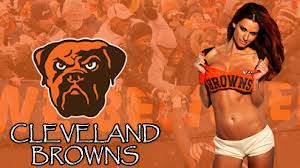
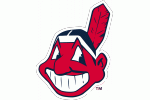
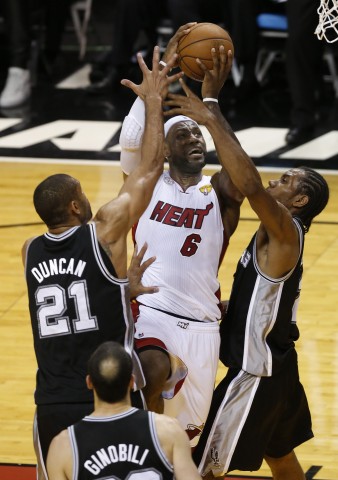
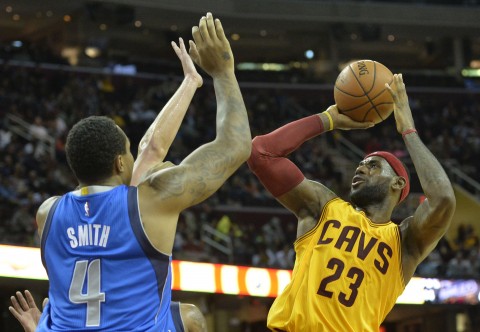
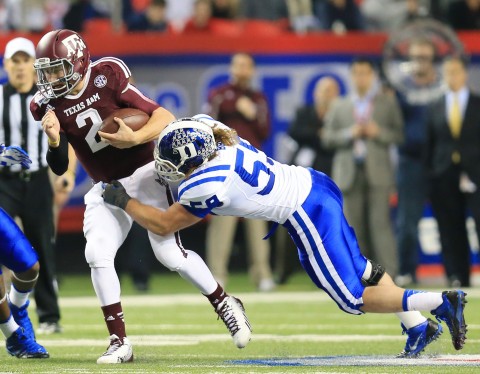
 Tweet This
Tweet This Share on Facebook
Share on Facebook Digg This
Digg This Bookmark
Bookmark Stumble
Stumble




0 Comments
You can be the first one to leave a comment.